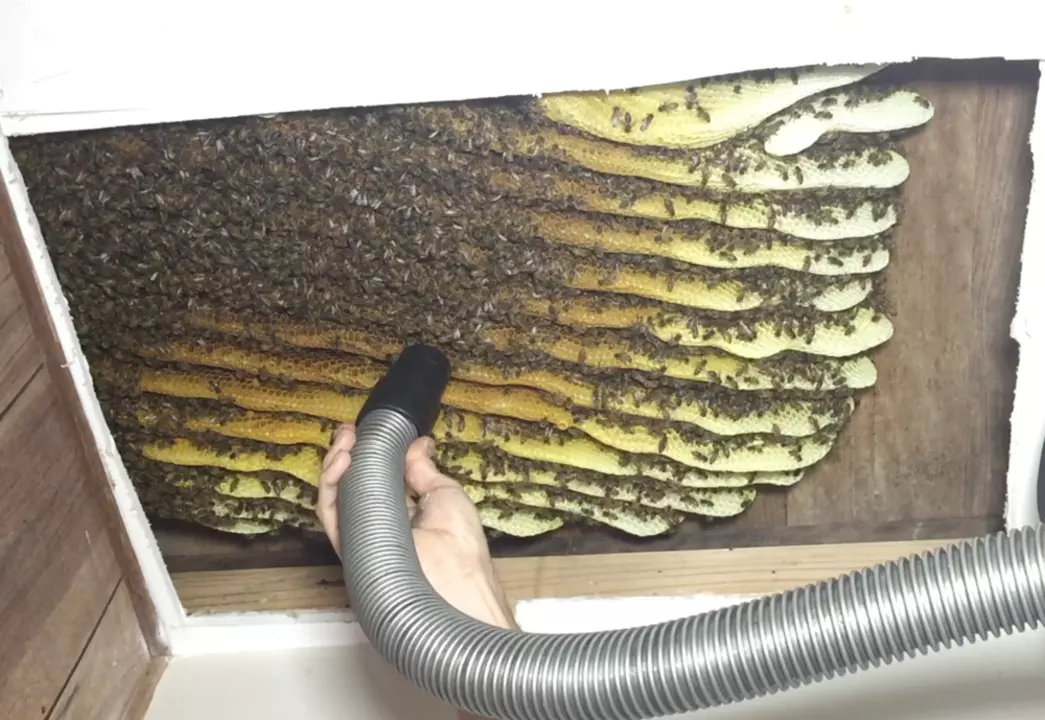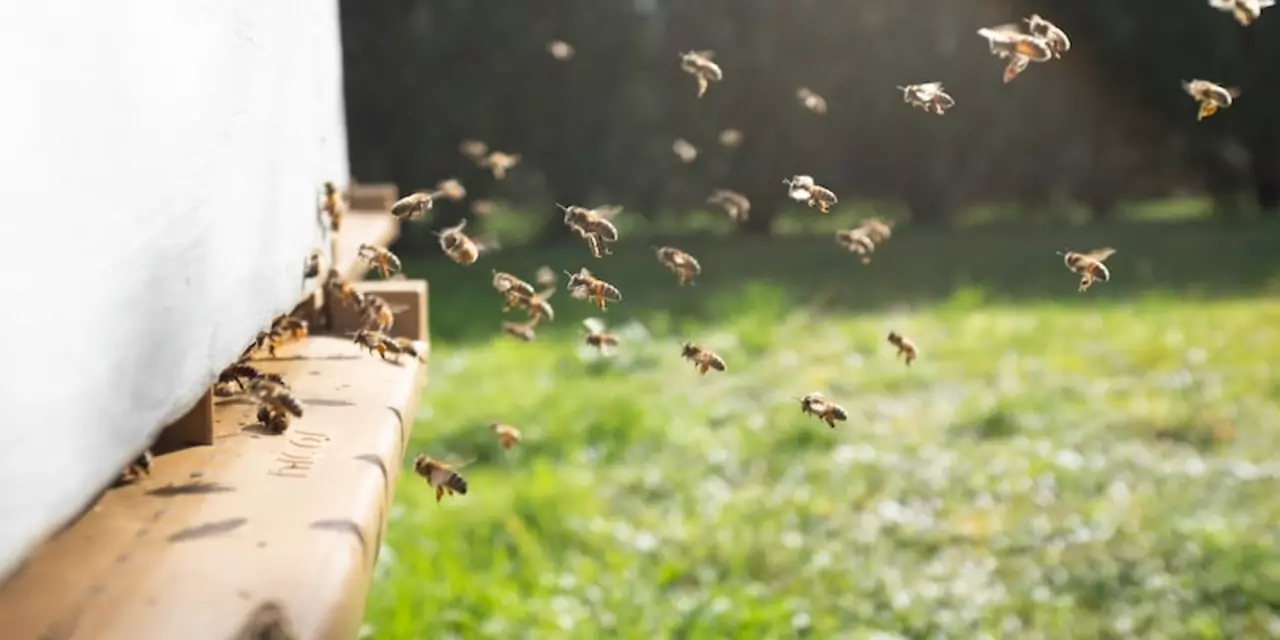Exploring the Maximum Size of a Beehive
Honey bees are a fascinating species, and one of their most impressive feats is their ability to construct beehives. While bee swarms may vary in size, beehives constructed from many individual bees have a limited maximum size that is determined by the number of bees in the colony and the types of materials available to them.
Bees construct their hives from wax and propolis, a sticky substance produced by the bees. The wax is used to construct the cells and walls of the hive, and the propolis is used to seal the cells and prevent the wax from melting in hot temperatures. The size of the hive is determined by the amount of wax and propolis that the colony can produce.
In general, a single beehive can contain up to 50,000 bees, with each bee producing around one gram of wax per day. This means that a single hive can contain up to 50 kilograms of wax and propolis. A larger colony of bees can produce more wax and propolis, but it is still limited by the amount of space available in the hive.
The maximum size of a beehive is also limited by the size of the bees themselves. While large colonies of bees can produce more wax and propolis, they cannot build a hive larger than the bees’ own bodies. This means that the largest beehive that can be constructed by bees is limited to the size of a single bee.
A beehive can also be limited in size by the size of the environment in which it is constructed. If the hive is constructed in an enclosed space, such as a shed or a tree cavity, then the size of the hive is limited by the size of the environment. This means that the largest beehive that can be constructed in an enclosed space is limited to the size of the environment itself.
The maximum size of a beehive can also be limited by the amount of food available to the bees. If the food resources available to the bees are limited, then the size of the hive will also be limited. This means that the size of the hive is determined by the amount of food available to the bees.
Finally, the maximum size of a beehive is also limited by the amount of space available to the bees. If the bees are unable to find enough space to build a larger hive, then the size of the hive will be limited. This means that the size of the hive is determined by the amount of space available to the bees.
In conclusion, the maximum size of a beehive is determined by the number of bees in the colony, the types of materials available to them, the size of the bees, the size of the environment, and the amount of food available to the bees. A single beehive can contain up to 50,000 bees and up to 50 kilograms of wax and propolis, but the size of the hive is ultimately limited by the size of the environment and the amount of food available to the bees.
How Big Can a Beehive Get?
When it comes to beehives, size really does matter. Bees live in colonies, and their hives need to be big enough to accommodate their ever-growing numbers. After all, the more bees a colony has, the better it can thrive and produce honey. But, how big can a beehive get?
To answer this question, it's important to understand the different types of beehives. The most common type is the Langstroth beehive, which is made up of several boxes, or "supers." Each super is made up of several frames, which contain the honeycomb and bees. The supers can be stacked on top of each other, allowing the hive to grow and accommodate more bees. The number of supers a hive can contain will vary depending on the size of the boxes, but the more supers the hive has, the bigger it can become.
A Langstroth beehive can also be modified to accommodate more bees. For instance, a beekeeper might add a "queen excluder," which is a metal grate that prevents the queen bee from accessing the upper levels of the hive. This allows the beekeeper to collect honey from the upper levels without the queen getting in the way. Another way to modify a Langstroth hive is to add extra supers. This can be done by adding a "honey super," which is a separate box that is specifically designed to hold honey.
There are also other types of hives, such as the top bar hive, which is a horizontal hive that is made up of several bars. This type of hive allows the beekeeper to easily access the honeycomb without having to open the hive. The top bar hive can also be modified to accommodate more bees, but it is not as efficient as the Langstroth hive when it comes to producing honey.
So, how big can a beehive get? The answer depends on several factors, including the type of hive, the number of supers, and the modifications that have been made to the hive. But, in general, a Langstroth beehive can grow to be quite large, and can accommodate hundreds of thousands of bees.
The Benefits and Challenges of a Large Beehive
A large beehive is one of the most fascinating and beneficial aspects of beekeeping. It can produce large quantities of honey, which can be sold or used to make products like wax, propolis, and more. It also provides a safe and secure space for bees to live and reproduce, and can help to diversify the bee population. However, there are some challenges that come along with having a large beehive that all beekeepers need to be aware of.
Benefits of a Large Beehive
The most obvious benefit of a large beehive is the increased amount of honey that is produced. A large beehive can produce up to ten times more honey than a smaller one, which can result in a larger profit for the beekeeper. The additional honey can be sold or used to make other products like wax, propolis, and more. Additionally, a larger beehive can provide a safe and secure space for bees to live and reproduce, which can help to diversify the bee population.
Challenges of a Large Beehive
Although there are many benefits to having a large beehive, there are some challenges that come along with it. One of the main challenges is the amount of maintenance and effort that is required to keep a large beehive functioning properly. As the hive grows, so does the amount of upkeep. This can include inspecting and cleaning the hive regularly, as well as ensuring that the bees have enough food and water.
Additionally, beekeepers must be prepared to deal with the increased risk of disease and pests. A large beehive can attract more pests and diseases, which can be difficult to manage. Beekeepers should be prepared to take preventative measures to protect their hive, such as using insecticides and other treatments.
Finally, beekeepers must be aware of the increased risk of colony collapse disorder (CCD). CCD is a serious condition that can cause the death of a bee colony, and is caused by a variety of factors, such as pesticides, parasites, and diseases. Having a large hive can increase the chances of CCD, so beekeepers must be prepared to take preventative measures to protect their hives.
Understanding the Growth of Beehives and their Size
Bees are one of the most important creatures on earth, so it is important to understand how their hives grow and expand. For many people, the first thing that comes to mind when thinking about beehives is their size. While the size of a beehive will depend on the type of bee, it can range anywhere from a few inches to several feet.
Honeybees are the most common type of bee found in North America and they typically live in a hive made of wax combs. These hives can range in size from small enough to fit on a kitchen counter to large enough to fill a room. The size of a beehive will depend on the size of the bee colony and the number of combs that have been built.
The size of a beehive is also determined by the type of bee that is living in it. Bumblebees, for example, usually live in much smaller hives than honeybees. A bumblebee hive can range from about four inches to a foot in size.
Another factor that can influence the size of a beehive is the amount of food and nutrition available to the bees. If a bee colony has plenty of food sources nearby, the hive can become quite large. On the other hand, if there is a lack of food, the hive will not be able to get as large.
The size of a beehive can also be affected by the climate in which it is located. In areas with warm, dry climates, beehives tend to be larger than in areas with cold, wet climates. Bees need to keep their hives warm in order to survive, so they will build larger hives in warmer climates to help retain their body heat.
Understanding the growth of beehives and their size is essential for all beekeepers. By knowing the size of a hive, beekeepers can better assess the health of their bees and make sure they are getting the nutrition they need.

